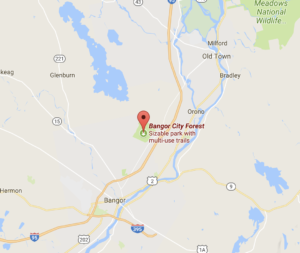
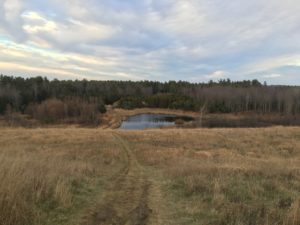
Fresh wind brushes tired skin, soft rustling of tall grass penetrates ear drums, the rejuvenating smell of fresh rain accumulating through the field. As worn eyes pan over the surrounding area, a sense of familiarity and content wash over you while the breathtaking view from your childhood returns. The wind gently glides over the soft pond and leaves subtle ripples in its wake to entertain the resident beavers. The aroma of fresh dew on pine needles wafts through the expansive area, coating it in a cool aura of the woods. The chipper chipmunks, out to get their daily nut, roam freely through the expanse of the great Bangor wilderness on the prowl for their prized acorn.
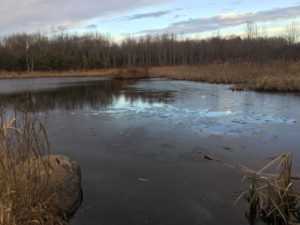
The beginnings of a freeze take form on Beaver Pond, foreshadowing the future events of winter. Soft water slowly shifts its form into a rugged, hard sheet of natural glass. What was once ripples will soon be snow flurries as they fly across the mini tundra on Beaver Pond. A sunset kissing the tops of the trees as it falls down behind the horizon, saying good bye for the day.
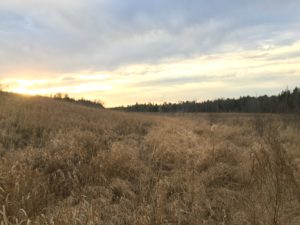
In both places, the area stays fairly green as winter comes due to a high number of evergreen trees, although the presence of deciduous trees is noted and visible. While Salmon Hole has a larger body of water present, the Bangor Woods also has a few ponds scattered about, like the one pictured above. Bangor has a more open environment in places, like the tall grassy area also pictured above. Salmon hole is more closed off, and only opens up once you get to the rocky surfaces with no trees and the river. Given both spots are in New England, the ecology and phenology of the specific areas nearly mimic each other, with similar soil types as well as similar trees and animals. One of the biggest differences in the two spots is the presence of rocks. Salmon hole has a large presence of rock faces mainly around the riverbed, but the Bangor Woods lacks any major rock surfaces.

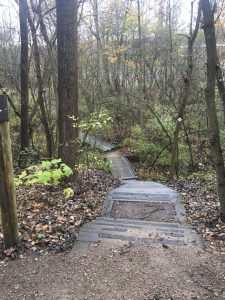
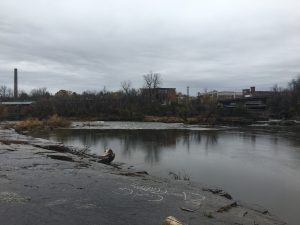
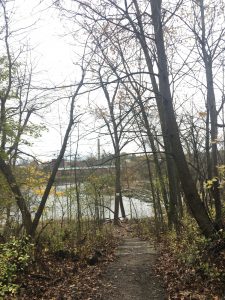
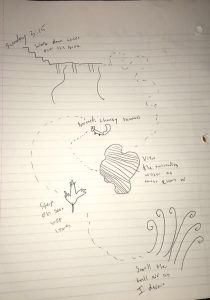
Recent Comments